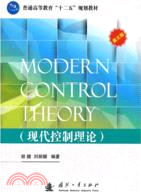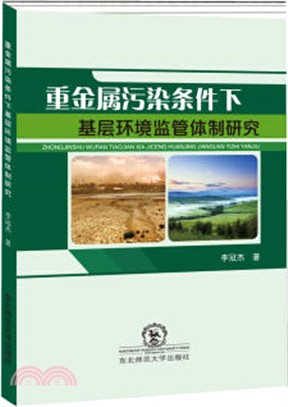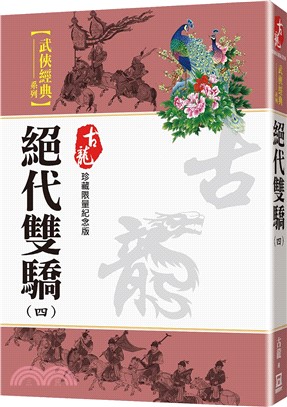商品簡介
目次
商品簡介
本書內容共分為6章,主要涉及系統建模、系統分析和系統優化設計。第l章通過引入控制系統的一些基本概念,給出了系統的數學描述方式,如:狀態空間模型,傳遞函數矩陣。第2章在時域內對系統進行了定量分析。第3章和第章主要進行了系統的定性分析。其中,第3章討論了系統的穩定性問題,第4討論了系統的能控性和能現性問題。第5章研究了系統綜合設計的方法,例如:狀反饋,利用狀態觀測器進行狀態重構。在第6章中,研究了離散系統的建模、分析綜合設計。
本書可作為自動化、電氣工程廈其自動化等專業高年級本科生以廈控制科學與工程、電氣工程等學科研究生學習現代控制理論雙語課程的教材也可作為學習高級宏、微觀經濟學的經濟、管理學科研究生的輔助教材。
本書可作為自動化、電氣工程廈其自動化等專業高年級本科生以廈控制科學與工程、電氣工程等學科研究生學習現代控制理論雙語課程的教材也可作為學習高級宏、微觀經濟學的經濟、管理學科研究生的輔助教材。
目次
Chapterl State Space Description
1.1 Definition of State Space
1.1.1 Exmple
1.1.3 State Space Description
1.1.4 Transfer Function Matrix
1.2 Obtaining State Space Description from I/O Description
1.2.1 Obtaining State Space Description from Differential Equation
1.2.2 Obtaining State Space Description from Transfer Function
1.2.3 Obtaining State Space Description from Block Diagram
1.3 Obtaining Transfer Function Matrix from'State Space Description
1.4 Description of Composite Systems
1.4.1 Basic Connection of Composite Systems
1.4.2 Description of the Series Composite Systems
l.4.3 Description of the Parallel Composite Systems
1.4.4 Description of the Feedback Composite Systems
1.5.1 Eigenvalue and Eigenvector
1.5.2 State Transformation
1.5.3 Invariance Properties of the Stare Transformation
1.5.4 Obtaining the Diagonal Canonical Formby State Transformation
1.5.5 Obtaining the Jordan Canonical Form by State Ttansformation Problems
Chapter2 Time Response of the LTI System
2.1 Time Response of the LTI Homogeneous System
2.2 State Transition Matrix
2.2.2 Properties oi the State Transition Matrix
2.3 Calculation of the Matrix Exponential Function
2.3.1 Direct Method
2.3.2 Laplace Transform Method
2.3.3 SimdariTy TransfoRation Method
2.3.4 Cayley Hamihon Theorem Method
2.4 Time Response of the LTI System
Chapter3 Stability of the control System
3.1 The Basics of Stability Theory in Mathematics
3.2 Lyapunov Stability
3.2.1 Equilibrium Point
3.2.2 Cocepts of Lyapunov Stability
3.3 Lyapunov Stability Theory
3.3. ] Fyapunov First Method
3.4 Application of Lyapunov 2 Method to the LTI System
3.5 Construction of Lyapunov Function to the Nonlinear System
Chapter4 Controllability and Observability
4.1 Controllability of The LTI System
4.1.1 Cntrollability
4.1.2 Criteria of ControlIabillty
4.2 Observability of The LTI System
4.2.1 Observahility
4.2.2 Criteria of ()bservability
4.3 Duality
4.4 Obtaining the Controllable and Observable Canonical Form by State Transformation
4.4.1 Obtaining the Controllable Canonical Form by State Trahsformation
4.4.2 Obtaining the Obserable Canonical Form by State Trarlsformation
……
Chapter5 Synthesis of the System
Chapter6 Discrete Time Control System
Index
References
1.1 Definition of State Space
1.1.1 Exmple
1.1.3 State Space Description
1.1.4 Transfer Function Matrix
1.2 Obtaining State Space Description from I/O Description
1.2.1 Obtaining State Space Description from Differential Equation
1.2.2 Obtaining State Space Description from Transfer Function
1.2.3 Obtaining State Space Description from Block Diagram
1.3 Obtaining Transfer Function Matrix from'State Space Description
1.4 Description of Composite Systems
1.4.1 Basic Connection of Composite Systems
1.4.2 Description of the Series Composite Systems
l.4.3 Description of the Parallel Composite Systems
1.4.4 Description of the Feedback Composite Systems
1.5.1 Eigenvalue and Eigenvector
1.5.2 State Transformation
1.5.3 Invariance Properties of the Stare Transformation
1.5.4 Obtaining the Diagonal Canonical Formby State Transformation
1.5.5 Obtaining the Jordan Canonical Form by State Ttansformation Problems
Chapter2 Time Response of the LTI System
2.1 Time Response of the LTI Homogeneous System
2.2 State Transition Matrix
2.2.2 Properties oi the State Transition Matrix
2.3 Calculation of the Matrix Exponential Function
2.3.1 Direct Method
2.3.2 Laplace Transform Method
2.3.3 SimdariTy TransfoRation Method
2.3.4 Cayley Hamihon Theorem Method
2.4 Time Response of the LTI System
Chapter3 Stability of the control System
3.1 The Basics of Stability Theory in Mathematics
3.2 Lyapunov Stability
3.2.1 Equilibrium Point
3.2.2 Cocepts of Lyapunov Stability
3.3 Lyapunov Stability Theory
3.3. ] Fyapunov First Method
3.4 Application of Lyapunov 2 Method to the LTI System
3.5 Construction of Lyapunov Function to the Nonlinear System
Chapter4 Controllability and Observability
4.1 Controllability of The LTI System
4.1.1 Cntrollability
4.1.2 Criteria of ControlIabillty
4.2 Observability of The LTI System
4.2.1 Observahility
4.2.2 Criteria of ()bservability
4.3 Duality
4.4 Obtaining the Controllable and Observable Canonical Form by State Transformation
4.4.1 Obtaining the Controllable Canonical Form by State Trahsformation
4.4.2 Obtaining the Obserable Canonical Form by State Trarlsformation
……
Chapter5 Synthesis of the System
Chapter6 Discrete Time Control System
Index
References
主題書展
更多
主題書展
更多書展今日66折
您曾經瀏覽過的商品
購物須知
大陸出版品因裝訂品質及貨運條件與台灣出版品落差甚大,除封面破損、內頁脫落等較嚴重的狀態,其餘商品將正常出貨。
特別提醒:部分書籍附贈之內容(如音頻mp3或影片dvd等)已無實體光碟提供,需以QR CODE 連結至當地網站註冊“並通過驗證程序”,方可下載使用。
無現貨庫存之簡體書,將向海外調貨:
海外有庫存之書籍,等候約45個工作天;
海外無庫存之書籍,平均作業時間約60個工作天,然不保證確定可調到貨,尚請見諒。
為了保護您的權益,「三民網路書店」提供會員七日商品鑑賞期(收到商品為起始日)。
若要辦理退貨,請在商品鑑賞期內寄回,且商品必須是全新狀態與完整包裝(商品、附件、發票、隨貨贈品等)否則恕不接受退貨。































